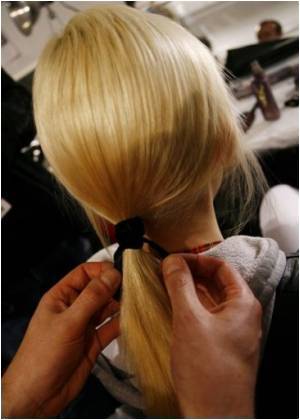Absence of hair in certain areas of the body is normal and is due to the presence of a naturally occurring protein inhibitor called Dickkopf 2 (DKK2), which blocks a key pathway that stimulates hair growth.
- Hairless areas in the human body such as palms and soles are due to an inhibitor of hair growth that is naturally present
- Dickkopf 2 (DKK2) protein blocks a key pathway (WNT pathway) that induces hair growth
- Targeting the DKK2 gene that inhibits hair growth may offer a potential form of treatment/cure of hair loss diseases such as male and female pattern baldness
Read More..
Testing DKK2 Protein Levels in Skin of Animals
The natural inhibitor protein Dickkopf 2 (DKK2) occurs in certain embryonic and adult tissues where it influences hair growth as appropriate. The team analyzed DKK2 expression levels in various animals having differing hair distribution.- The team measured levels of expression of the DKK2 protein in the bottom (plantar) of the skin of its forelimbs, which is similar to the bottom of the human wrist which is normally hairless
- DKK2 protein was highly expressed in the plantar skin of mice and when the DKK2 gene was knocked off in the lab, hair grew in this normally hairless area
- In rabbits and polar bears, hair is normally present in the plantar skin as well. The study team found that levels of expression of DKK2 in these areas was low suggesting why hair growth is possible at these sites
- The findings of the study suggest that production of DKK2 in various skin regions and consequently hair growth has changed over time to suit the needs and the habitat of the animal during evolution
Scope of Study
The DKK2 gene which codes for the corresponding DKK2 protein could be a possible treatment target for developing newer and more effective treatments for hair loss in the future.Nearly 80 million persons in the US alone suffer from male or female pattern baldness associated with hair thinning and hair loss which can be cosmetically disfiguring and treatment options are currently limited or causing adverse effects restricting their prolonged use.
Current Treatments for Male and Female Baldness
Both men and women are prone to develop baldness around middle age. Currently, the only drug approved to treat female pattern baldness is minoxidil and it takes several months for results to be visible. For male pattern baldness, finasteride and dutasteride are FDA approved but not advised for women. Another drug is the diuretic spironolactone, which may be beneficial but is associated with side effects.Future Research Plans
Following severe burns or extensive, deep wounds involving the skin, hair growth stops in these areas. The study team plan to further investigate whether naturally secreted WNT pathway inhibitors during such situations inhibits hair growth in these areas.In conclusion, the findings of the study pave the way for more research to understand the mechanisms of hair growth and hair loss and developing newer and more effective treatments.
In the words of Milar, "We hope that these lines of investigation will reveal new ways to improve wound healing and hair growth, and we plan to continue to pursue these goals moving forward."
References:
- Researchers Discover Why Some Parts of the Body Have Hair and Others Don’t - (https://www.pennmedicine.org/news/news-releases/2018/november/researchers-discover-why-some-parts-of-the-body-have-hair-and-others-dont)
Source-Medindia
















